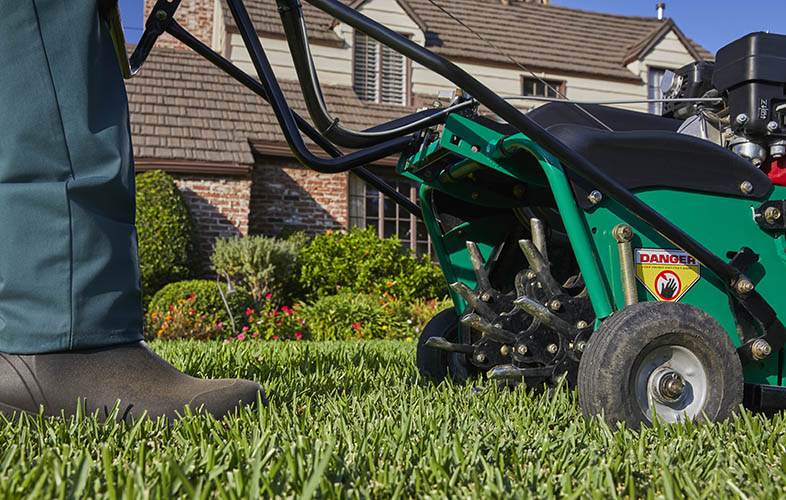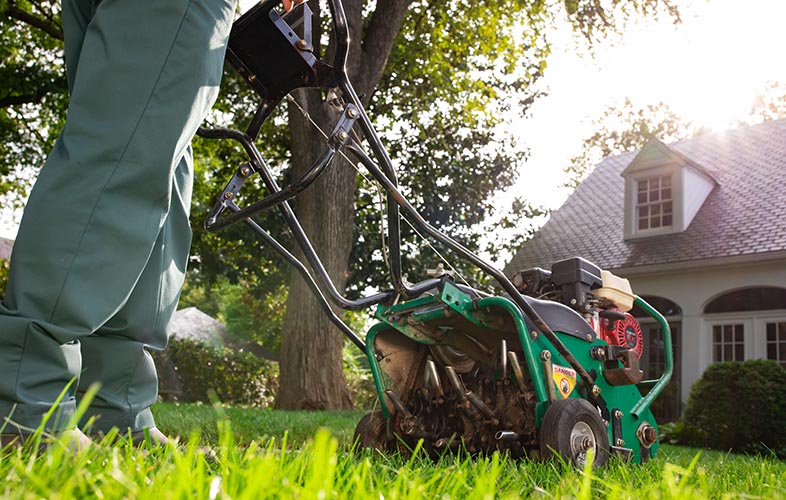Even if you have a drought-tolerant lawn, dry grass requires special care to remain in good shape. Here, learn three tips for keeping your lawn healthy during warm, dry weather.
1. Limit Foot Traffic
Even the most drought-tolerant grasses can experience drought stress if left without water long enough. This condition typically causes wilting and discoloration, and if left untreated, can cause your grass to go dormant. If your lawn is beginning to exhibit signs of drought stress, the first thing you’ll want to do is give it water. After that, hands off (or rather, feet off). Heavy foot traffic can place an additional strain on your already-stressed lawn, which may lead to slower recovery. So during a drought, keeping off your lawn can help keep your grass intact.
2. Avoid Mowing Too Frequently
When you’re in the throes of hot, dry weather, try to avoid mowing your lawn. The longer the blades, the more moisture your grass can retain — which is why longer grass is better in a drought than shorter grass. If you must mow, be sure to use sharpened blades for clean, even cuts, and keep your mower blades on a high setting.
3. Keep an Eye Out For Thatch
Thatch — a build-up of organic matter on your lawn’s surface — makes it difficult for essential nutrients, water and sunlight to reach the grass’ roots. This is especially problematic during a drought, as grass needs all the moisture it can get when environmental conditions are dry. If your turf is prone to thatch, we suggest incorporating Lawn Aeration into your annual lawn care schedule. This service removes thatch and helps stimulate root development to ensure your lawn stays healthy throughout the seasons.









 Back to all blogs
Back to all blogs
Facebook
X
Youtube
Copy Link
Email